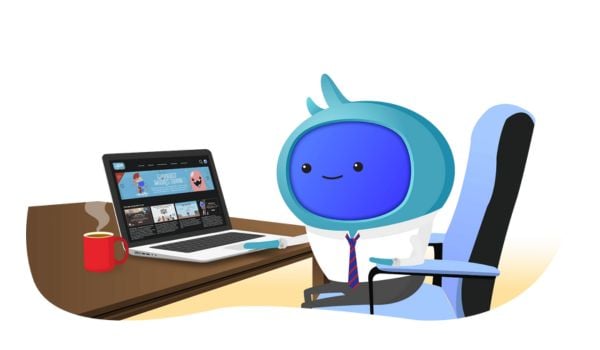Why accessibility and inclusion matters
Would you be comfortable designing learning content that potentially excluded up to 15% of the global population? Of course not. But if you don’t embrace universal design principles to actively remove barriers to participation for disabled learners, that’s effectively what you’ll end up with: learning that a substantial number or people won’t be able to fully use. How about learners who don’t have access to high-quality equipment, would it be ok to exclude them? And what about people with limited computer literacy, or those who use mobile phones to access content? Naturally, the idea of actively excluding this many people is really uncomfortable. It’s also a terrible business model. Luckily, you can use Inclusive UX design to ensure a high-quality experience for a diverse audience. Because there’s no such thing as a standard learner. And everyone deserves an equal opportunity to learn.
Overcoming challenges for diverse audiences
Here are a few ways of using inclusive UX design to overcome potential barriers for as many learners as possible.
- Use clear, consistent information architecture. Create menus that are easy to use with a variety of technology. Provide clear instructions about how to use interfaces.
- Use plain language and avoid jargon. This supports people with cognitive and processing differences. It also helps organisations like Global Lingo translate content effectively, allowing international audiences to participate.
- Design with a range of assistive technology in mind. Screen readers convert written material into braille or spoken content. Including alt text descriptions of all images means those using screen readers don’t miss out on information.
- Provide alternative versions of content. Transcripts and closed captions remove barriers to engagement for deaf and hearing-impaired learners. iAM Learning has found that downloadable podcast versions of courses help diverse audiences engage in ways that work for them.
- Make sure all interactions can be fully navigated by a keyboard. This will support people with different levels of fine motor skills and allow for the use of a range of devices.
- Focus on readability. Avoid placing text on busy backgrounds or at wacky angles. Make sure colour contrast is high, so the text is clear.
- Don’t use colour as the only means of delivering learning. Brush up on colour accessibility and remove barriers for colour blind learners.
- Use inclusive language. Tell learners to select content, instead of clicking it to send a functional, inclusive message to those using keyboard navigation.
A business case for inclusive UX design
Inclusive UX design benefits all users. Providing closed captions and transcripts of audio content removes a barrier to participation for deaf learners. It also benefits people working in quiet or loud spaces. It helps learners with sound sensitivity concentrate and avoid burnout. It allows people using equipment that doesn’t provide sound to engage. And it offers a level of choice that improves the experience for all learners. It’s a great example of how inclusive UX design extends market reach across all audiences. Focusing on inclusivity also drives innovation and attention to design. It sends a clear message that a brand is committed to inclusion, improving its image and reputation. And compliance with international standards like the Web Content Accessibility Guidelines (WCAG) and ISO/IEC 40500 set businesses in good stead to create learning content that meets compliance standards internationally, too.
Upcoming trends in inclusive UX design
As our understanding of neurodiversity and how it impacts learning and concentration develops, it’ll continue to lead to innovation in UX design. So will internationalisation, with a focus on design that can be fully adapted to different languages, scripts and cultures. Keep collaborating with a diverse group of professionals to actively develop your understanding of different audiences and their needs.
Ready to learn the iAM way?
All of our content has been designed with accessibility in mind. Why not try our unique, bite-sized eLearning content that your learners will love? Get in touch with us or try iAM Learning for yourself - get started today!

